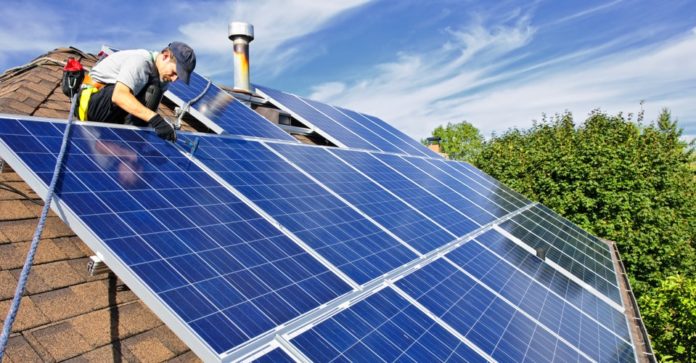Welcome to “Tuesdays with Scott” segment of the Climate Change program.
Last week, I talked about the fact that most of the solar spectrum cannot be converted into electricity. Only a very small spectrum or frequency can actually meet the band gap energy in order to convert the energy into electricity.
The next several weeks, I will explain different solar cell technologies, starting with commercial modules that are typically installed on residential and commercial roof tops.
Commercial modules are made from wafer-based or crystalline silicon solar cells. This type of solar cell technology is the dominant semiconducting materials used in photovoltaic technology for the production of solar cells. Production of semiconductor grade silicon involves a chemical purification to produce hyperpure polysilicon followed by a recrystallization process to grow monocrystalline silicon. The cylindrical boules are then cut into wafers for further processing. Solar cells made of crystalline silicon are often called conventional or first generation solar cells. The technology was developed in the 1950’s and remains the most common type of solar cells found in homes and businesses.
That also means that we are using a technology that is almost 70 years old. So keep this in mind when people talk about the cost structure and efficiency of solar panels. The reality is that there are newer commercialized technologies that are much more efficient and resilient than the conventional commercial modules.
If you remember from a few weeks ago, according to physics, the thermodynamic efficiency limit is approximately 86 percent, which is the absolute maximum theoretically possible conversion efficiency of sunlight to electricity.
However, with commercial modules, the type that’s installed on roof tops, the maximum efficiency limit is only 12 to 21 percent. That is significantly less the 86 percent thermodynamic efficiency limit.
So not all solar cell technologies are equal. If we want to transition away from fossil fuels, we have to be smarter about integrating new commercialization ready technologies that can lower the initial and ongoing cost structure while producing the highest level of electricity.
Next week, I go more in-depth into single-junction cells.
Don’t forget to subscribe to Climate Change with Scott Amyx on Amazon Alexa and give it a 5-star rating.


















